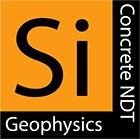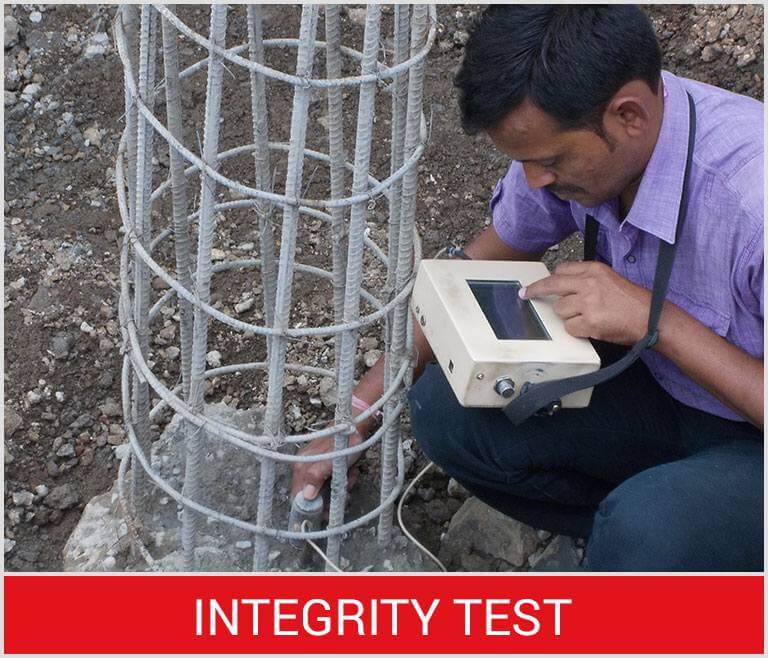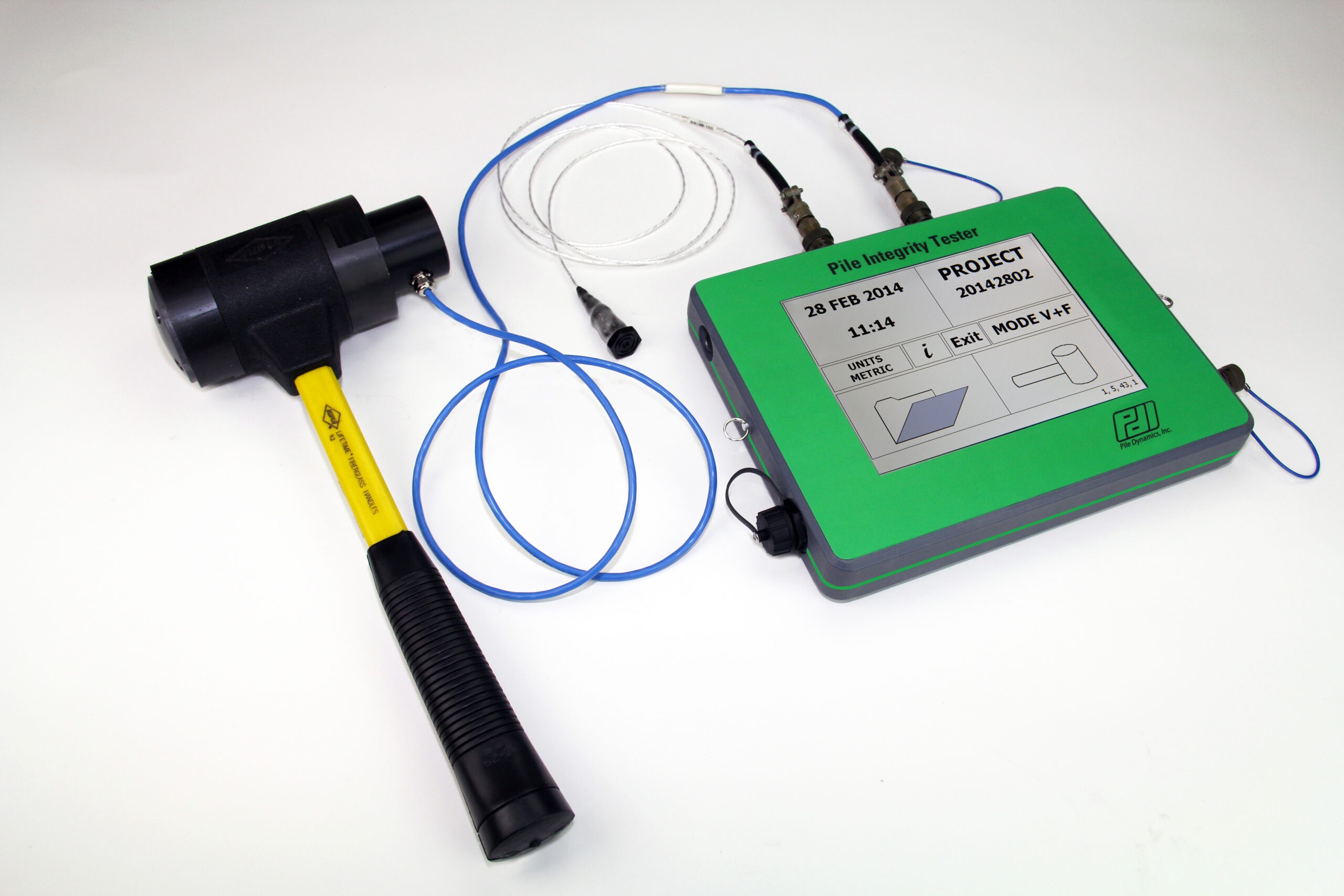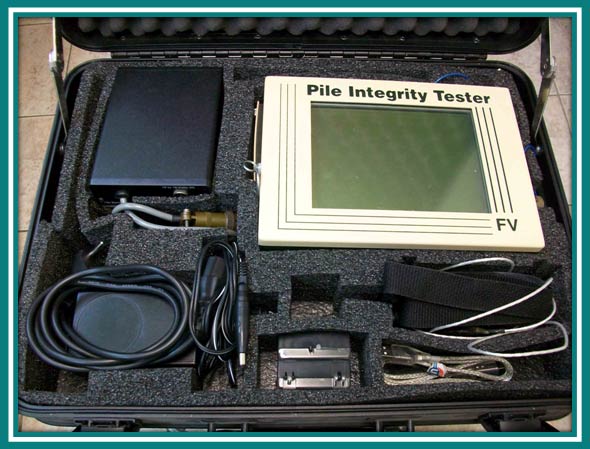Applicable to investigating deep-foundation structures like: Bridges, Piers, jetties, towers and buildings, we conduct Sonic echo / Impulse response pile integrity testing (PIT) in accordance to ASTM D5882-16 and AS 2159-2009 procedure, data acquisition, processing and reporting. The method is effective in accurately determining: Depth, geometrical and condition parameters of unknown deep foundation or piles, hence handy for quality verification of on-going pile-foundation works.
Determine
- Necking and Bulbing in piles
- Cracks and discontinuities in piles
- Depth to defect
- Plot Changes in pile size or material with depth
- Pile head stiffness
- Pile shaft mobility
Analysis
Based on stress wave propagation and reflection theory; a stress wave (compression / tension) in a uniform rod is reflected if the wave encounters an impedance change or discontinuity. Structurally sound shafts made with concrete should have:
- Reflection wave from shaft toe with only minor variations of the record amplitudes between impact and toe reflection.
- Sound shafts may also be indicated by negative velocity reflections which are often caused by bulges (softer soils), auger-wobble or excess grout pressure allow for an
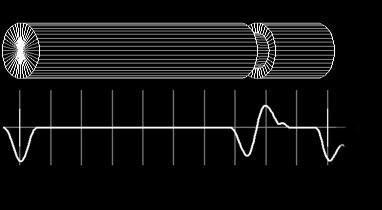
QA/QC: The characterization and location of defects is only as good as the accuracy of wave velocity determination and quality of the pile. Results may be categorized into:
- AA: Sound shaft integrity indicated a clear toe reflection (within accuracy limits of design length and wave speed).
- BB: No major defect indicated (neither reflections from pile size changes, nor defects nor a clear toe response).
- ABx: No major defect indicated to a depth of x (m) due to the limitation of PIT, interpretation of the full length is not possible. A large bulge or high soil resistance may cause the shafts fall into this category.
- PFx: Indication of a probable flaw at approximate depth of x (m) reflection corresponding to an unplanned reduction in size or material quality and toe reflection is apparent.
- PDx: Indication of a probable defect at an approximate depth of x (m), major reduction of size or material defect cause a strong reflection
